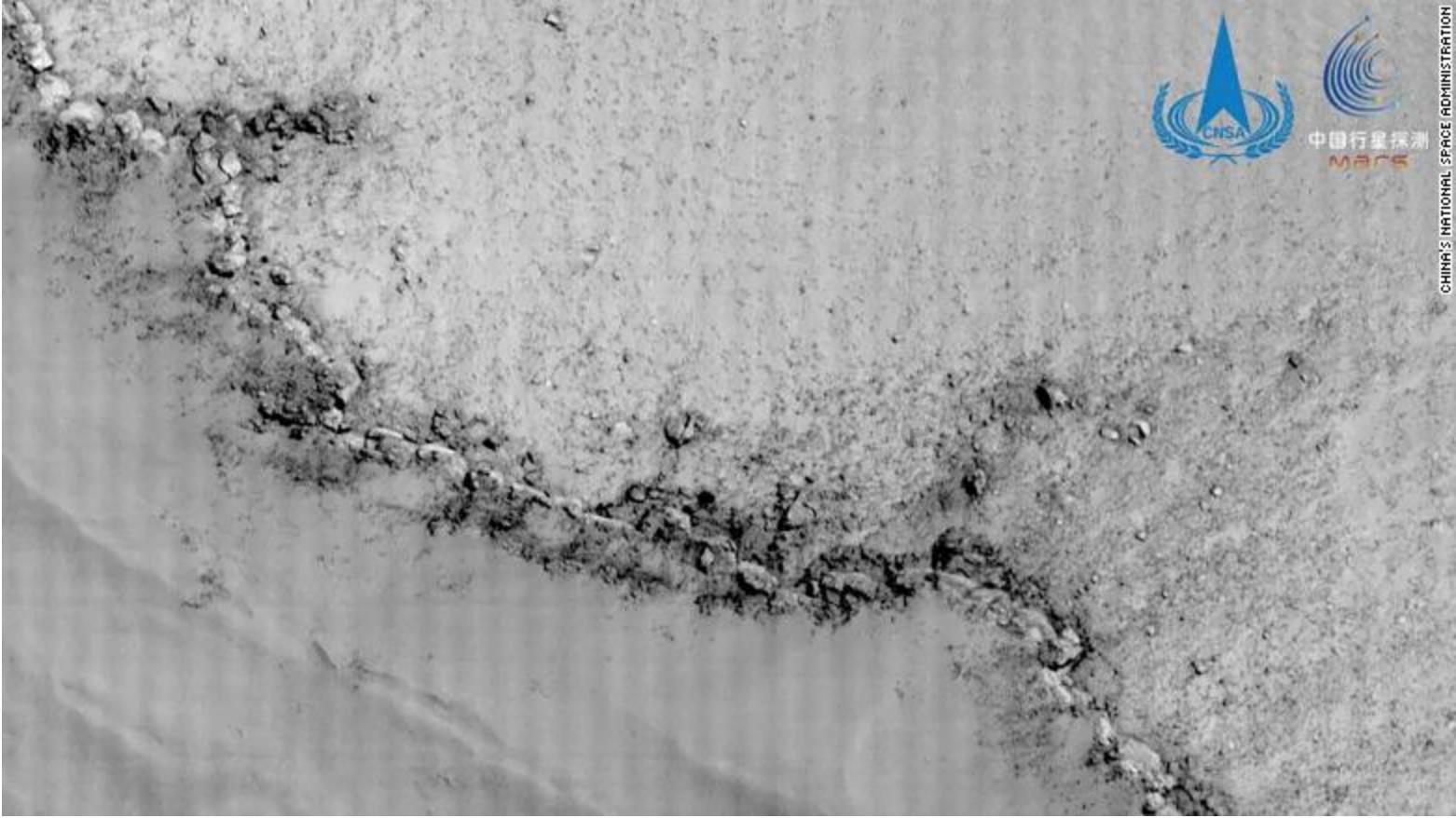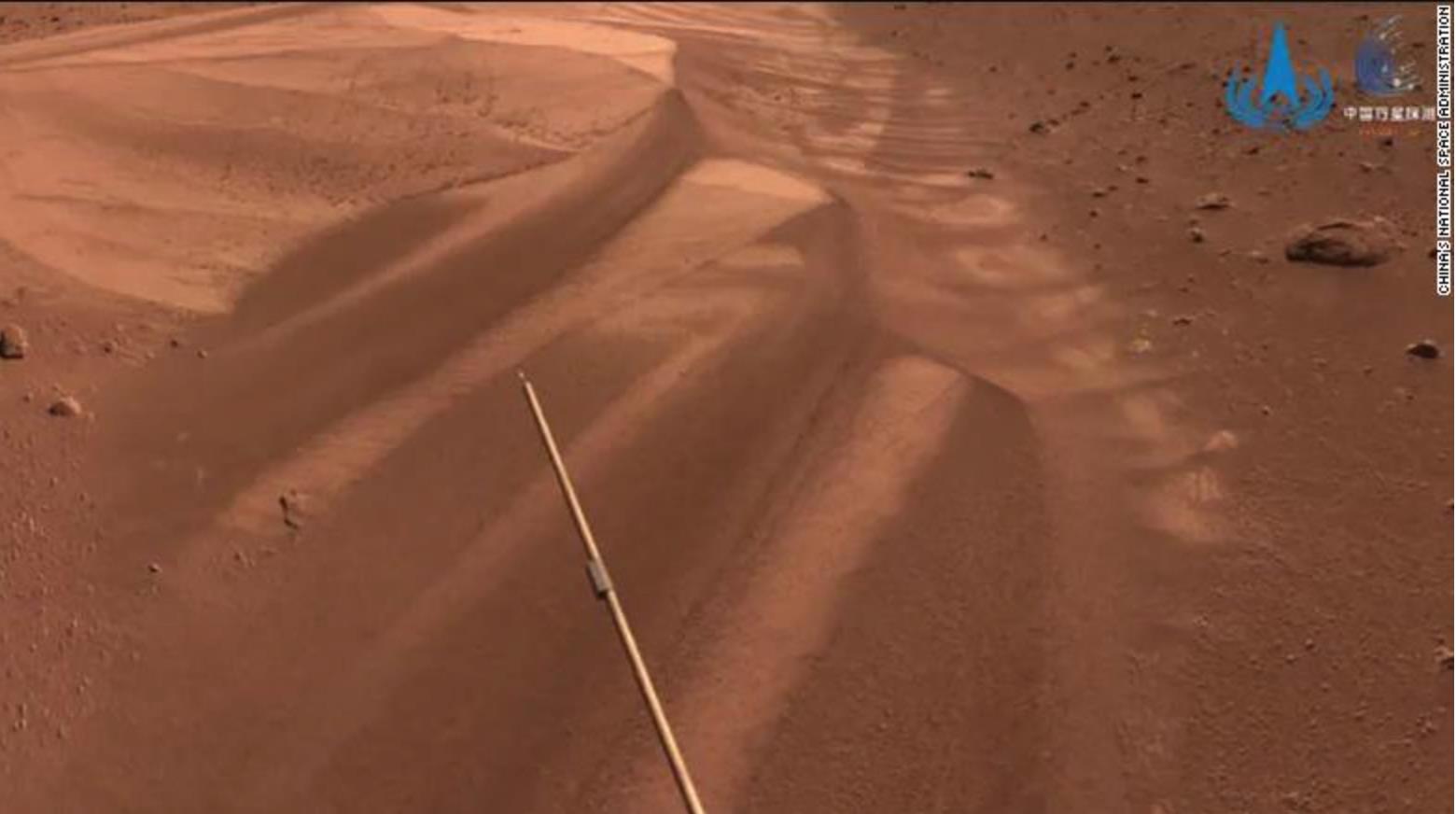(MENAFN- Asia Times)
China officially concluded its Tianwen-1 Mars mission on Wednesday, marking a great leap forward for its space program and burgeoning rivalry with the United States for an edge in outer space.
China's unmanned Tianwen-1 completed 1,344 orbits in taking medium and high-resolution imagery of the planet's entire surface, providing 1,040 gigabytes of original scientific data in its two-year journey, the Chinese state-run newspaper Global Times reported . Tianwen means“quest for heavenly truth” in Chinese, various news reports noted.
Reuters identified some of the photos from Tianwen-1, including shots of the planet's south pole where almost all of Mars' water is locked in ice, the 18-kilometer high Ascraeus Mons volcano, the 4,000-kilometer Valles Marineris canyon and the Arabia Terra impact craters.
The presence of subsurface water may indicate that the planet has the potential for sustaining life and the resources to support future human settlement, some reports have suggested.

A high-resolution image showing the edge of a crater on Mars. Image: CNSA
The Tianwen-1 orbiter will continue remote sensing of the planet. At the same time, the Zhurong surface rover will resume operations in December this year after trekking 1,925.5 meters since May 22, 2021 and entering a dormant mode on 18 May 2022 due to extreme cold, sand, and dust at its landing site, the Global Times report said.
According to the China National Space Administration (CNSA) , Tianwei-1's mission is to study Mars' morphology and geological structure, soil characteristics, and distribution of surface water ice, surface material composition, atmospheric ionosphere, surface climate, and environment, as well as the physical field and internal structure of the planet.
Tianwen-1 is equipped with 13 different scientific payloads to perform its mission, with seven of these instruments loaded on the Tianwei-1 orbiter, six on the Zhurong rover and two payload controllers separately installed on the orbiter and the rover, as specified in a paper published in the peer-reviewed journal Advances in Space Research.
In an interview in the National Science Review peer-reviewed journal, Chi Wang, director of Tianwen-1's Scientific Payload Sub-System, classifies these systems as optical cameras for imagery from the orbiter and rover, radars to detect underground structures, spectrometers to analyze soil and rock composition and monitors for space and atmosphere environments to detect Mars' magnetic field, space radiation and climate.
China has said it is willing to share Mars data collected by Tianwen-1, with the CNSA saying that“the scientific data will be available to scientists around the world at an appropriate time and scientists are welcome to apply for research over the data.”
“The scientific exploration is aimed at deeply knowing Mars, and the scientific data obtained through orbital exploration around Mars will enable us to better understand it,” says Zhang Ronquiao, chief designer of the Tianwen-1 mission, as interviewed in the South China Morning Post.
The success of the Tianwen-1 mission establishes China as a serious contender in a multipolar space race involving established spacefaring powers such as the US, Russia and EU alongside newcomers such as India, South Korea, Iran and Brazil.
“China's successful Mars landing demonstrates to the world that there is another country with advanced interplanetary space capacities,” says independent space analyst Namrata Goswami, quoted in the New York Times.
The US Mars exploration program began in 1964 when the Mariner 4 orbiter returned 21 pictures of Mars' surface. Currently, the Perseverance rover is searching for signs of ancient life on the planet and is collecting samples for future analysis on Earth.
Mars exploration is primarily driven by its potential to become humanity's second home, as it is the nearest planet that most resembles Earth. As such, Mars exploration missions have focused on finding life or water on the planet, a breakthrough that could change the future of humanity.

An image of dunes on Mars, taken by the Zhurong rover of the Tianwen-1 probe shortly before it entered dormancy in May 2022. Image: CNSA
Yongxin Pan, chief scientist of the Tianwen-1 mission, emphasizes the importance of knowing the processes that turned Mars into the planet it is today, investigating whether it has or once had the features necessary to support life, such as oceans, a dense atmosphere, and global magnetic field, speaking in an interview in the National Science Review journal.
Pan mentions that while there is no clear evidence of life on Mars, he says there are some potential signs of life on the planet, such as seasonal variation of methane in the atmosphere.
The Tianwen-1 mission is also a milestone in China's attempts to achieve self-sufficiency in interplanetary exploration technology.
Wang pointed out that China partnered with Russia early in its Mars exploration program but this partnership failed with the loss of the jointly-designed Yinghuo-1 Mars satellite in a 2011 launch failure. Consequently, Wang stressed China's need to rely on its technology now that it has the Long 5 March rocket and its deep-space monitoring network for future Mars missions.
MENAFN01072022000159011032ID1104462273
Legal Disclaimer:
MENAFN provides the information “as is” without warranty of any kind. We do not accept any responsibility or liability for the accuracy, content, images, videos, licenses, completeness, legality, or reliability of the information contained in this article. If you have any complaints or copyright issues related to this article, kindly contact the provider above.